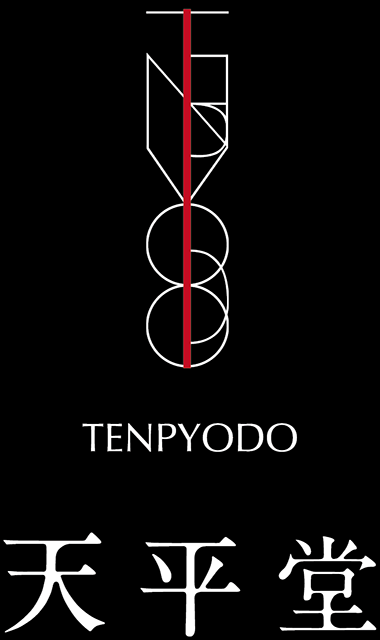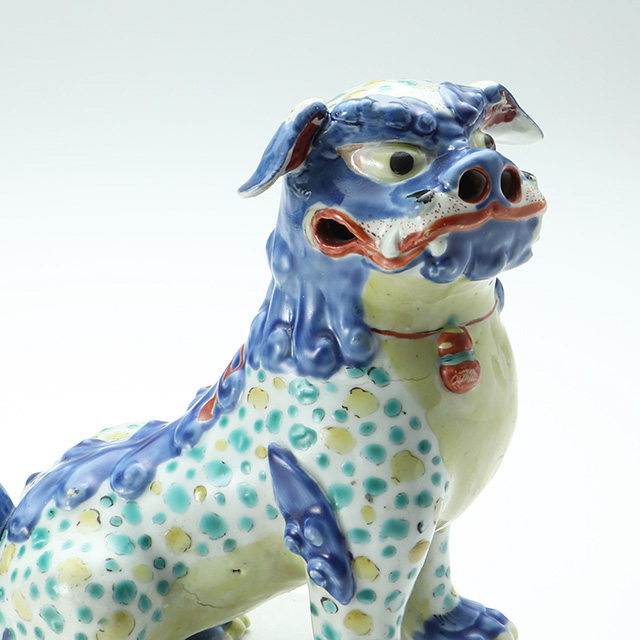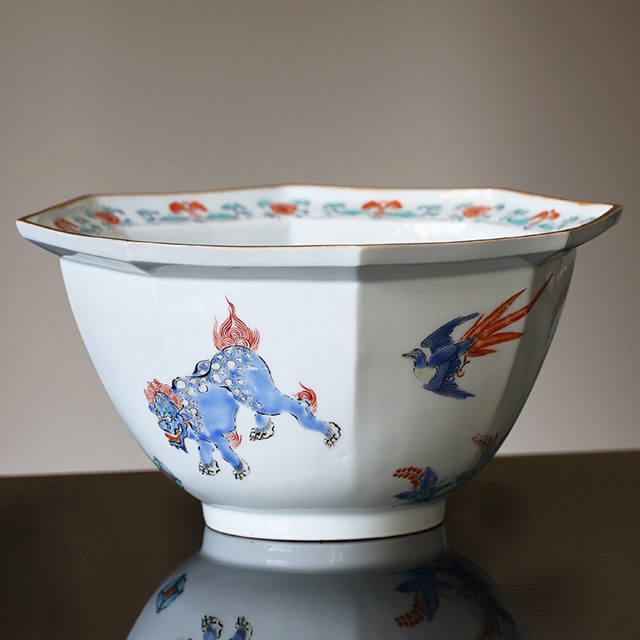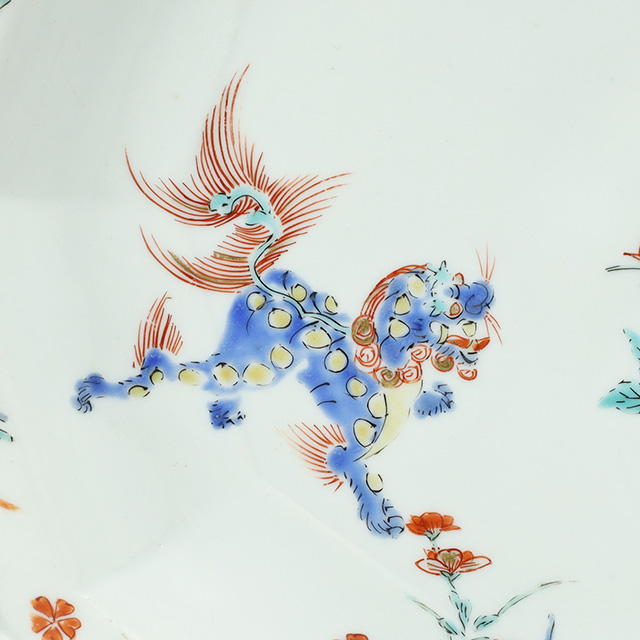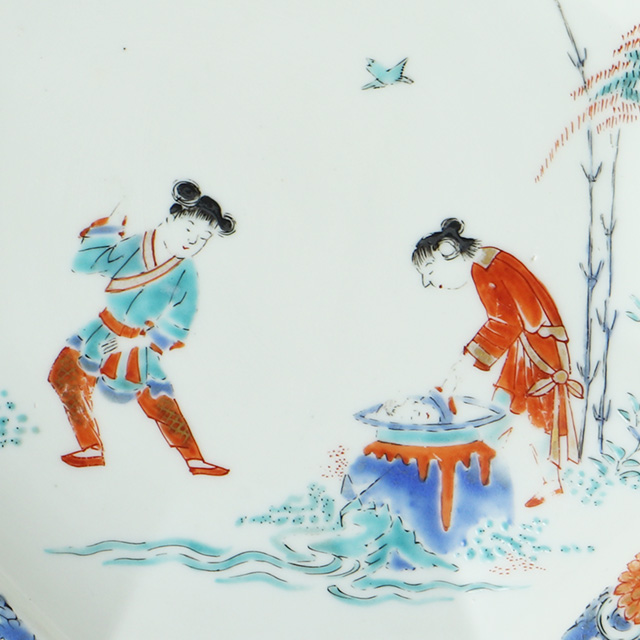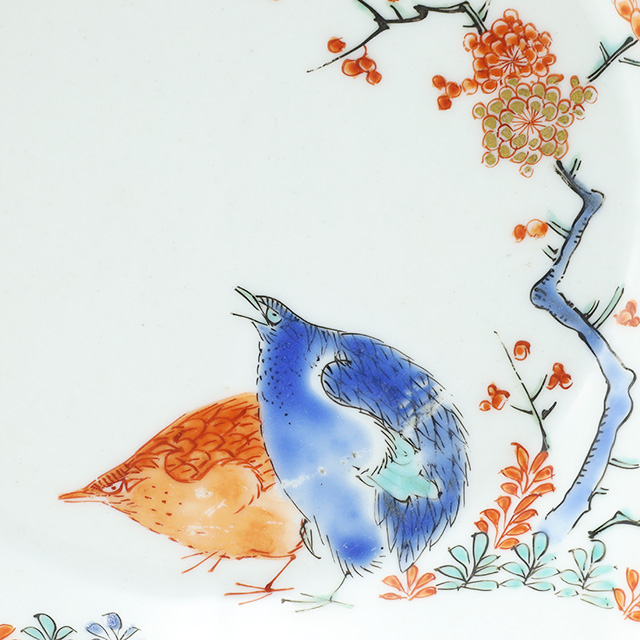Kakiemon-Style
柿右衛門様式
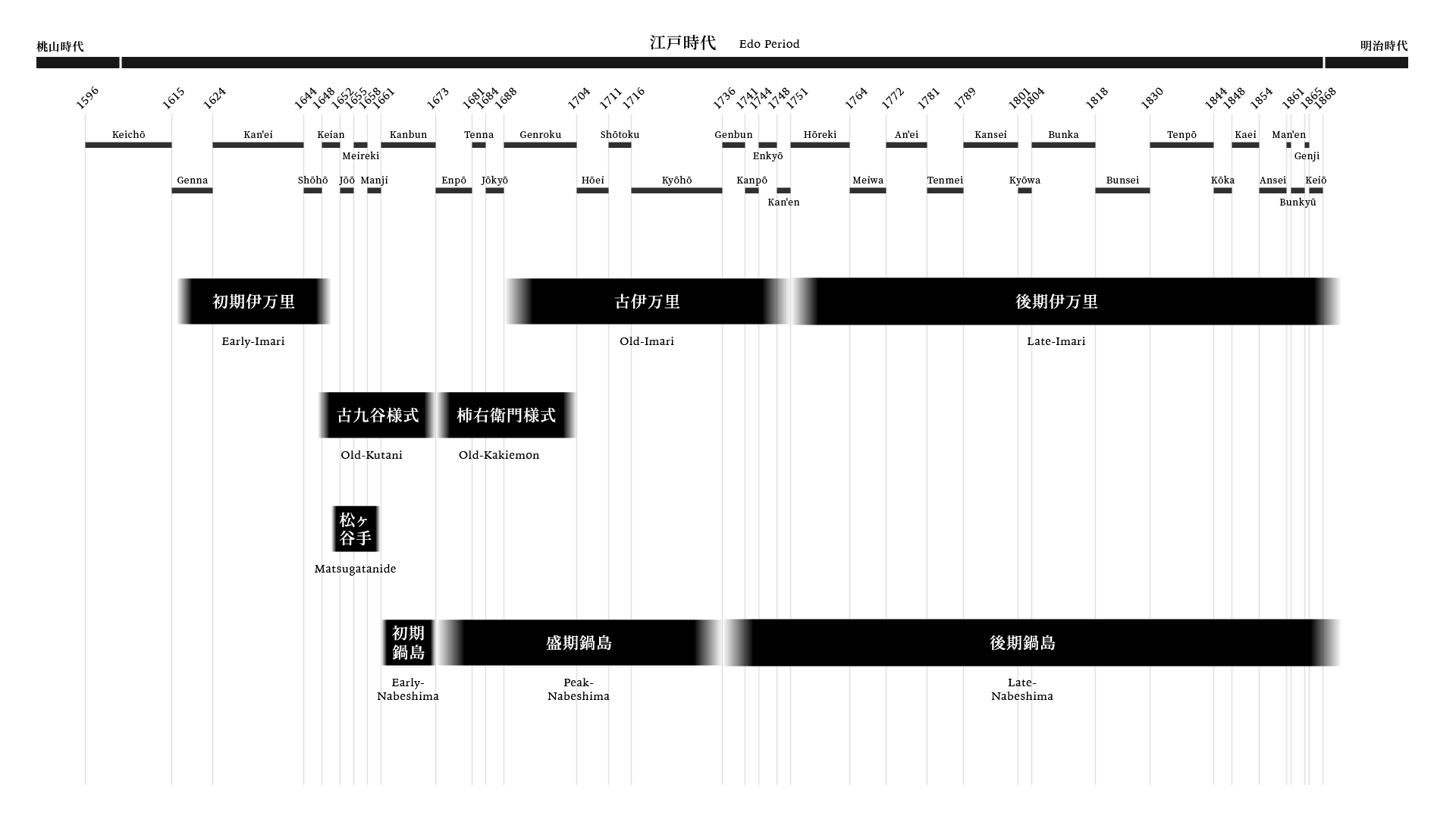
https://tenpyodo.com/en/product1/cat/japanease-en/(Fine Arts ⇒ Japanese Antique)
Early Aka-e
Early Aka-e refers to the earliest group of overglaze‑enamelled porcelains produced primarily during the Kanbun era (1661–73) for export. These works are regarded as transitional pieces that bridge the styles of Ko-Kutani and Kakiemon, and those showing a closer affinity to the latter are often described as “Early Kakiemon.” Most surviving examples were exported to Europe and Southeast Asia through the Dutch East India Company (V.O.C.), and their total number is extremely small compared with later export Imari wares. The enamels of this period reveal a strong influence from Ming dynasty Chinese porcelains. While Arita ware initially began as an imitation of Chinese models, the growth of overseas trade prompted a gradual shift toward a distinctly Japanese aesthetic, ultimately leading to the formation of its own refined artistic identity.
Kakiemon-Style
Kakiemon-style refers to a distinctive category of Imari ware primarily fired during the Enpō era (1673–81). These works were not exclusively produced by the Kakiemon family; rather, they emerged as a collective response to large-scale export orders from the Dutch East India Company (V.O.C.), and were completed across various kilns in Hizen Arita. The term “style” thus denotes a broader aesthetic, now widely recognized as “Kakiemon” in its extended sense. Characterized by refined compositions that embrace negative space and delicate brushwork by skilled painters, these porcelains possess an elegant and noble beauty. Their exquisite craftsmanship captivated European royalty and aristocracy, earning enduring popularity among the V.O.C.’s cargo offerings. Among the most celebrated features is the nigoshide body – a soft, milky-white porcelain base that heightens the brilliance of overglaze enamels. This innovation profoundly influenced the development of European porcelain, notably at Meissen and Chantilly. Signatures often include the stylized “uzu-fuku (spiral-fuku)” mark, where the character for “fortune” is rendered in a swirling motif. Other marks such as “kin (gold)” and “inishiebito (ancient person)” appear on particularly fine examples. While exported Ko-Imari ware from the Edo period also displayed opulent beauty, it was the Kakiemon-style that drew the greatest admiration. After World War II, many works that had journeyed to Europe were repatriated in large numbers. The sheer volume of exported works far exceeds the domestic legacy, underscoring the style’s original purpose as an export commodity. Notably, works that blur the distinction between Ko-Imari and Kakiemon-styles are often referred to as Kakiemon-de. In recent years, the term “Kakiemon” has come to be applied more broadly – even to later works of lesser refinement – reflecting evolving perceptions of the style.
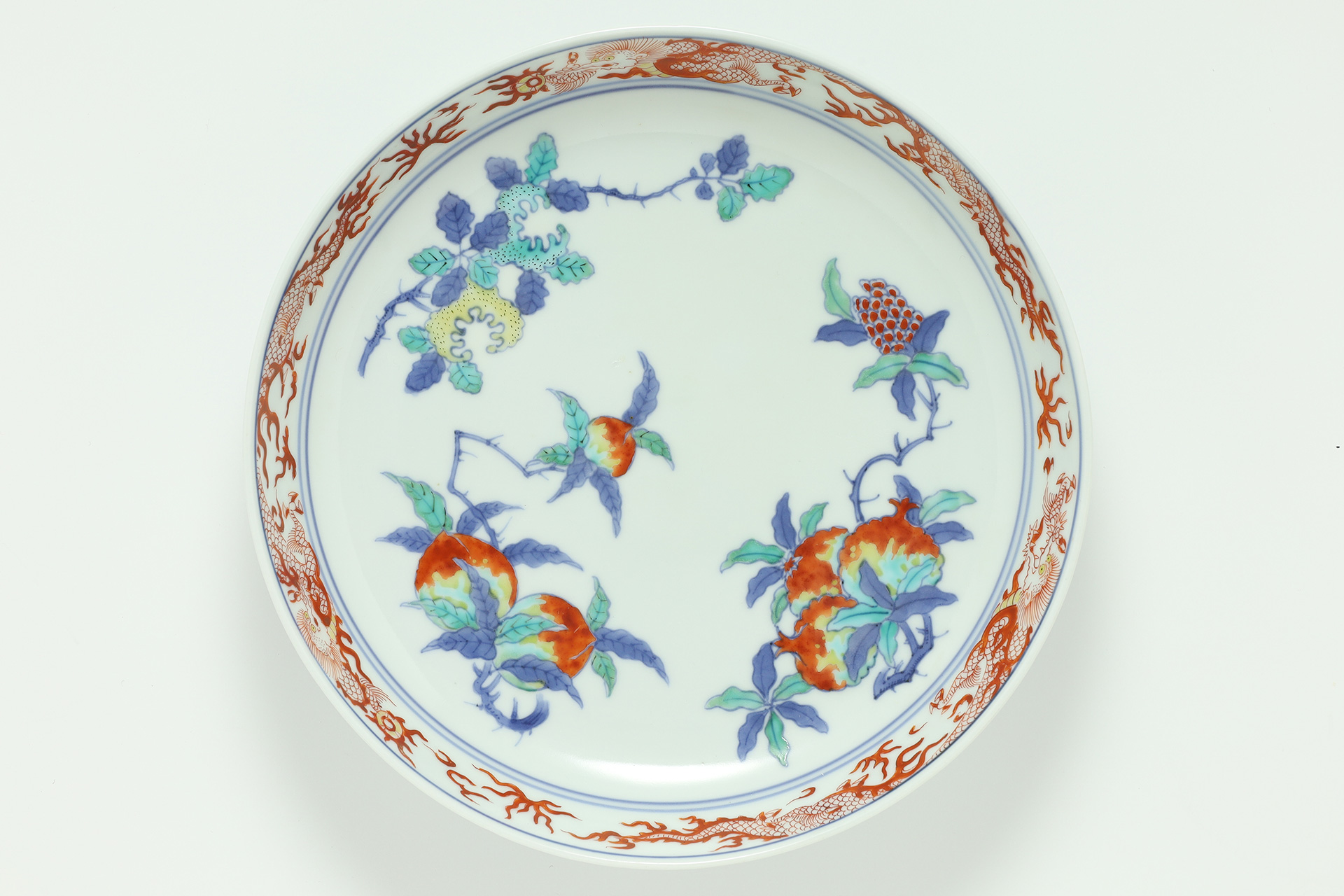
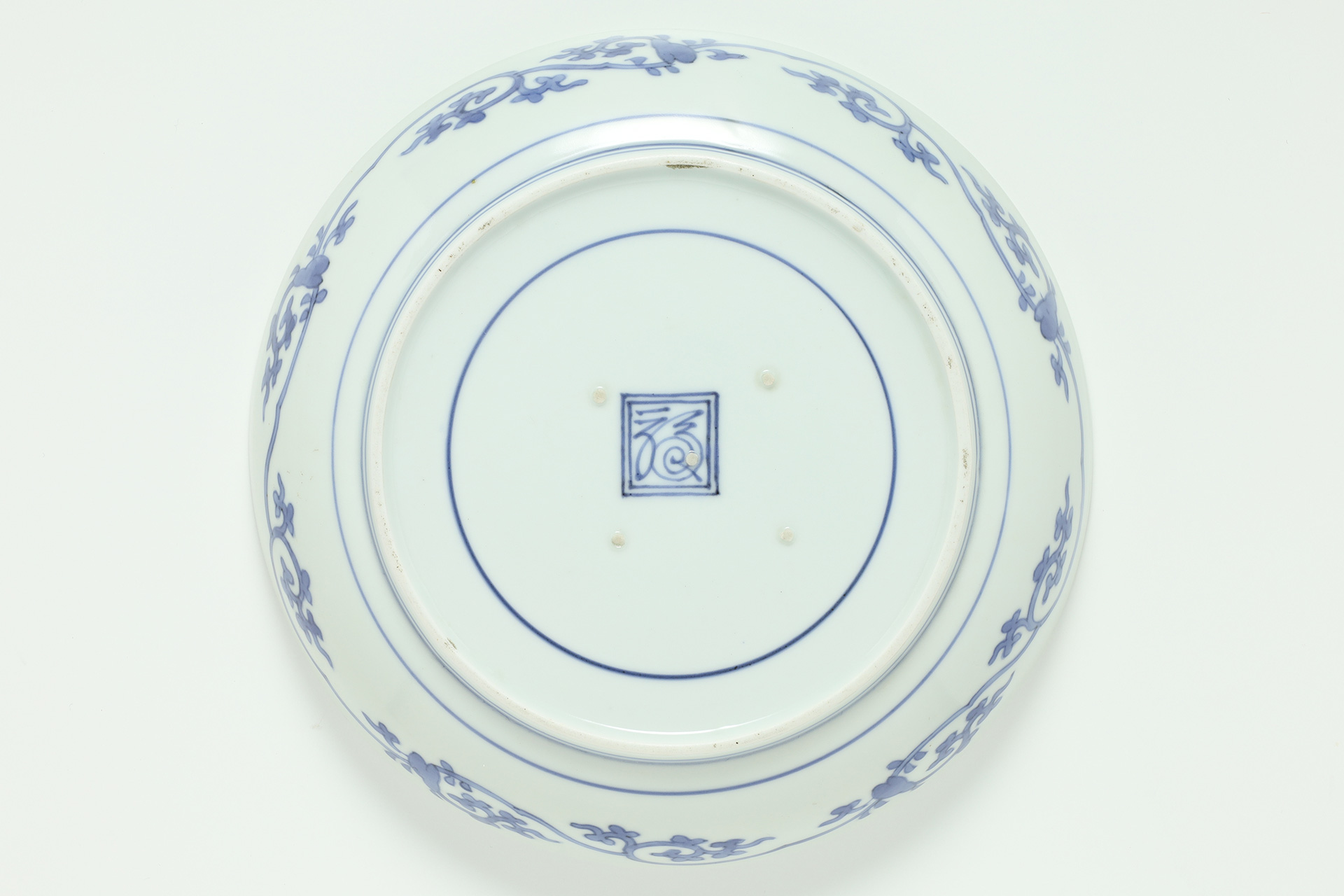
Nigoshide
The technique known as “Nigoshide,” emblematic of the peak of the Kakiemon-style, derives its name from the Saga dialect word nigoshi, meaning “rice-washing water.” True to its name, it is distinguished by a warm, milky-white porcelain base. Internationally, it came to be known as “Milky-White” and was highly esteemed as an ideal white porcelain that accentuates the vividness of overglaze enamel decoration. Unlike standard white porcelain or blue-and-white porcelain, Nigoshide lacks any bluish tint. Its soft-toned surface harmonizes with the painter’s brushwork and the intentional use of blank space, giving rise to the graceful chromatic beauty unique to the Kakiemon tradition. To achieve this refined base, impurities such as iron must be meticulously removed from the porcelain stone and glaze materials. The glaze is applied in an exceptionally thin layer, and as a rule, Nigoshide is not used in combination with underglaze blue decoration. According to the “Doai-chō” (Clay Composition Ledger) handed down in the Sakaida family, dated 1690, the blend ratio for the Nigoshide base was recorded as 6:3:1, using ceramic stones from Izumiyama, Shirakawa, and Iwayagawachi respectively. Due to differing shrinkage rates during firing, many works were damaged – only about 50% of flat wares such as dishes, and roughly 20% of three-dimensional forms like jars, were successfully completed. This low yield is considered one of the reasons Nigoshide production eventually ceased. Nigoshide represented a supreme technical innovation developed for export to Europe, and it became established as the highest-quality white porcelain base within the Kakiemon-style. Its peak is believed to have occurred during the Enpō era (1673–81), with exemplary works likely fired at the Nangawara-Kamanotsuji kiln. Records suggest that as early as the 1650s, experimental production of porcelain bases specifically for overglaze enamel decoration had begun at the Kusunokidani kiln. However, these early attempts were marked by coarse forming and residual traces of iron, and had not yet achieved refinement. From the 18th century onward, as porcelain exports declined, Nigoshide also disappeared from production. It was not until 1953 that the Sakaida Kakiemon XII and XIII masters successfully revived the technique. The origin of the term Nigoshide remains unclear, and since it does not appear in Edo period documents, it is thought to be a modern designation, likely coined in the early Shōwa period.
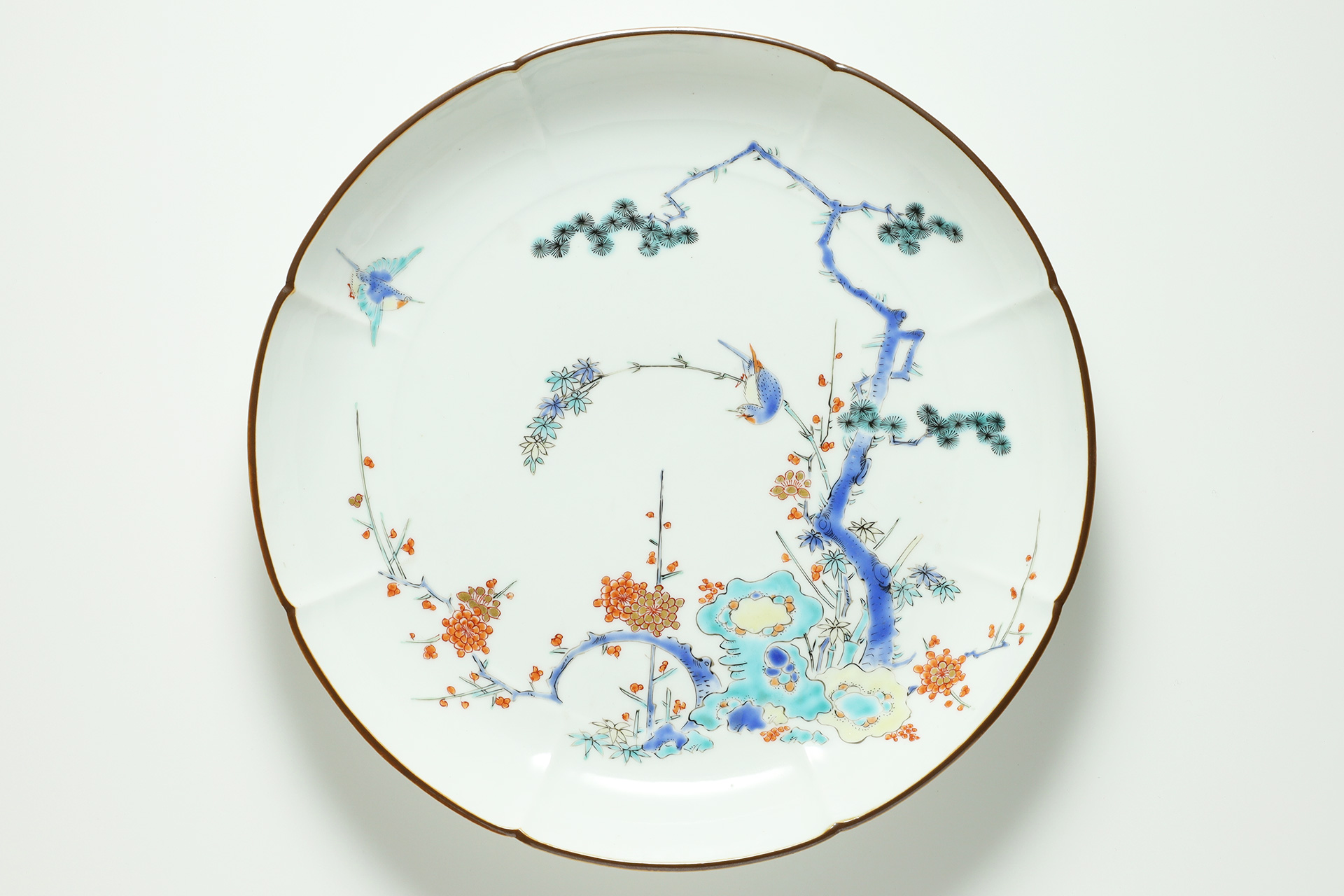
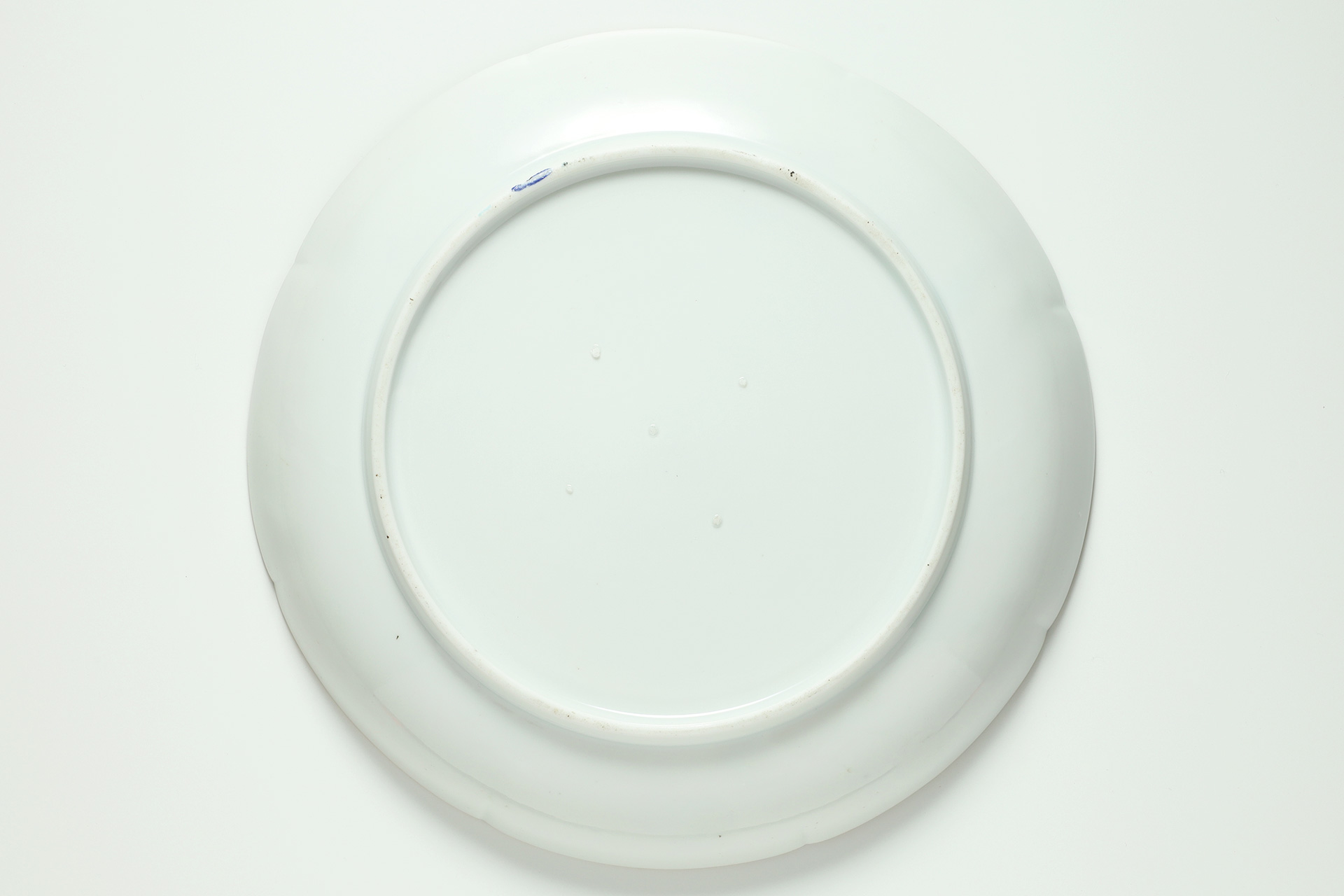
The Era Establishing the Export Industry Between the VOC and Japan
The east india companies were chartered companies established by european countries in the 17th century(the british in 1600, the dutch in 1602, and the french in 1604)for trade with the orient. The dutch east india company’s monogram, consisting of the initials “VOC”(Verenigde Oostindische Compagnie), was its emblem, was put on warehouses, coins, cannons, flags, ceramics, etc, to indicate the company’s ownership of products. In addition to spices, its original product of interest, the company also sought porcelain that could not be produced in europe and traded with china. The hard porcelain imported from china was called “White Gold” and was traded as a valuable item, rivaling gold in value. Once vast quantities of porcelain, a luxury item and symbol of wealth, were brought to europe, its beauty deeply impressed europeans, encouraging china to produce even more products. However, due to the civil war following the change between the ming and qing dynasties in the 1640s and policies restricting overseas trade, the quality of porcelain fired in the jingdezhen kiln and other porcelain kilns became inferior, making it almost impossible to buy porcelain products. As a result, the company sought japanese porcelain, which could be produced without interruption, as an alternative. In 1653, japan entered into an export deal with the dutch east india company(VOC)for imari ware. In 1659, japan received a massive order of about 56,700 pieces, ushering in a glamorous era for the export industry in japan. The new feudal system of the tokugawa government beginning to take shape, imari ware was thrust into the limelight of the international market as a product of the nabeshima clan of the saga domain. Because europe demanded identical replacements for chinese porcelain, many early pieces exported imitated the fuyode style and other styles from the late ming dynasty. The large volume of orders from the VOC led to significant technical advances at the hizen arita kilns, and the expanded capacity of these kilns made it possible to produce many jinko tsubo(agarwood jar). The exported porcelains varied widely in shape. Even considering this, it is clear that the expansion of trade with the VOC contributed to the significant flourishing of imari ware. When the qing dynasty lifted the qian-jie-ling(order blocking maritime traffic and trade)in 1684, exports of chinese porcelain resumed, and from around 1712, exports boomed. Chinese porcelain once again regained its dominant position in the market. As a result, imari ware lost out in market competition with chinese porcelain, which boasted quality, quantity, and low prices. China overwhelmingly outnumbered japan in the total number of porcelain exported through trade with the VOC. The establishment of meissen, the first porcelain kiln in europe, in 1710 contributed to the gradual decline of porcelain exports from asia. The official japanese porcelain trade ended in 1757 with a mere 300 pieces and then was left to private trade by the trading houses.
Events Related to the VOC
- 1602(Keicho7):Establishment of the dutch east india company(VOC).
- 1609(Keicho14):Establishment of the dutch trading post in hirado.
- 1641(Kanei18):Relocation of the dutch trading post to dejima, nagasaki.
- 1644(Kanei21):End of porcelain exports from china to the VOC, following a decline in porcelain exports beginning in about 1640.
- 1650(Keian3):Beginning of export of porcelain from japan as a replacement for chinese porcelain.
- 1651(Keian4):Beginning of exports to chinese merchants in addition to dutch merchants, where imari ware was acquired by the dutch and chinese alike.
- 1653(Shoo2):Signing of export agreement with VOC for imari ware, beginning their export. Records remain of these trades.
- 1659(Manji2):Beginning of full scale export of blue and white porcelains, including fuyoude, etc., after receiving a large order(approx. 56,700 pieces)of imari ware from the VOC.
- 1661(Kanbun1):Prohibition of chinese porcelain exports in the qing dynasty following the qian-jie-ling proclamation.
- 1684(Jokyo1):Resumption of exports of chinese porcelain after the lifting of the qian-jie-ling proclamation.
- 1710(Hoei7):Establishment of a porcelain factory in meissen, germany.
- The Shotoku era(1711-16):Tightening of restrictions on foreign trade, leading to a halving of the number of dutch and chinese ships arriving at dejima. Thus, porcelain exports also began to decline.
- 1725(Kyoho10):Stagnation of trade between japan and the VOC.
- 1757(Horeki7):End of official porcelain trade after only 300 pieces according to the VOC records, thereafter relegated to private trade by the trading houses.
- 1799(Kansei10):Dissolution of the VOC.
We sell and purchase Kakiemon-Style
We have a physical shop in Hakata-ku, Fukuoka City, where we sell and purchase "Kakiemon-Style" works. Drawing on a long career and rich experience in dealing, we promise to provide the finest service in the best interests of our customers. With the main goal of pleasing our customers, we will serve you with the utmost sincerity and responsibility until we close the deal.
